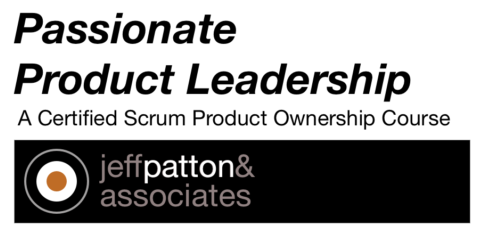Write Better with the Opportunity Solution Tree
The majority of businesses and personal blogs are putting out articles that simply don't contribute to any meaningful business outcome. With the Opportunity Solution Tree, you can switch your mindset and write better about what matters.

With my previous blog, I made some serious mistakes.
The root cause of my problems was that I am an SEO.
When I saw a keyword that was remotely interesting to me, then I wrote about it. I published dozens of articles that frankly had nothing to do with the topics I usually covered on my blog or the outcome I wanted to achieve with my writing.
But it worked.
I ranked for the keywords in the top positions. Traffic started to pour into the site and I had aggressively increasing charts in Google Analytics I could flex with.
But at the end of the day, these clicks and visits didn't contribute to any meaningful metric for me.
Users spent less time on SEO-driven articles than on other pieces, these readers barely ever subscribed to my newsletter and they never bought anything from me.
I wrote earlier about why focusing solely on SEO when publishing content online is a dead end:

Now I want to show you an alternative to find topics worth covering and a way to write content that brings you closer to your goals.
The Opportunity Solution Tree

The Opportunity Solution Tree is a visual aid to help you pick and prioritize opportunities with your desired outcome in mind.
The concept was created by Teresa Torres product discovery coach to help product teams during the product discovery process.
The Opportunity Solution Tree nudges its user to start with the desired outcome in mind and find opportunities which have the chance to impact the outlined outcome. Just after mapping the opportunities are we collecting solutions for the opportunities.
From Product Discovery to Writing
As an SEO Manager, I work with product teams and I was lucky enough to get introduced to the concept of the Opportunity Solution Tree.
It turned out that there are a lot of similarities between how product managers have difficulties prioritizing what to build, and how writers/marketers are struggling with what to write about to have an impact.
PMs are continuously bombarded with feature requests and ideas from internal stakeholders, which they have to align with user feedback and their own vision for the product.
They obviously can not fulfill every request.
Their team can not work for months on something which doesn't contribute to business KPIs.
In order to make the best decision for the product, teams are taking a step back with the help of the Opportunity Solution Tree.
The Opportunity Solution Tree for Writing Online
Product teams can not work on feature requests without thinking about their impact on the bottom line of the business.
The same applies to content creators and publishers when it comes to selecting what to write about.
While PMs can not build a strategy on feature requests, user comments, and distracting ideas, writers can not start only looking at keyword search volumes, inspirations from competitors, and TikTok trends.
First, we should take a step back.
My OST of Writing This Blog
To give you an example of how you can use the Opportunity Solution Tree to increase the impact you have with your articles, I will show you my process behind how I decide what to write about on this blog.

I like using online collaborative tools like Miro especially when others are contributing with ideas.
However, the above board is a product of a lone wolf which frankly you can replicate with simple post-its as well.
But let's get right into my thought process behind the board:
Desired Outcome
- Increase the number of subscribers to my newsletter
My desired outcome with writing is to nudge readers to subscribe to my newsletter.
Previously I kept an eye mainly on clicks from organic searches, page views, and other top-of-the-funnel metrics, but since my goal will never be to monetize the blog with display ads, these metrics didn't really help me.
I don't want to write an online encyclopedia.
I believe that the advantage of writing a personal blog and sharing my experiences is to have a connection with the reader. To create this connection I found having a newsletter and starting a discussion with readers immensely valuable.
I generally suggest going with conversion-related metrics.
Purchases, revenue, subscribers, affiliate sales, or lead magnet downloads all can be the valid desired outcomes.
Though maybe you just want to have fun with your blog.
That's totally acceptable as well (but maybe then you don't need this tool).

Opportunities
As a reader / creator, I want to
- be more productive
- reach more people
- get inspired
To come up with opportunities I collected the problems, and pain points readers have which leads them to read an article and maybe subscribe to a relevant newsletter.
Though I have to test whether these are true opportunities for me to pursue.
Writing about solutions targeting each opportunity and watching how likely readers subscribe through those may change the opportunities I pursue in the future.
If you are covering difficult topics you may have two or even more levels of opportunities.
Solutions
When it comes to Solutions, I am asking myself the following questions:
- What solutions are out there for the identified problems?
- Am I knowledgeable enough about these topics to write a comprehensive article?
- Can I find in-demand trending solutions? (keywords people are searching in Google Search, topics generating noise on Reddit...)
Be more productive
- Decide what to work on (f.e: Things to write in a notebook)
- Tools, and software to use (f.e: Craft Docs Review)
- Get the most out of what I have (f.e: Note-taking the Smart Way)
Reach more people
- Nail SEO while creating enjoyable content (This article is the perfect example)
- Keeping up-to-date with the platform changes (f.e: How important are core web vitals?)
- Distribute and repurpose (How to use other social networks, and different formats to increase reach)
- Use data to make it easier (f.e: How to measure SEO success or failure?)
Get inspired
- Unknown stories (I tend to subscribe to newsletters that are sharing stories I have never heard of. I intend to do the same)
- Book reviews (f.e: The Culture Map Summary)
- 30-day challenges (f.e: How I Translated 50 SEO Articles)
The bottom level of the Opportunity Solution Tree is the placeholder for ideas, keywords, and requests.
Suggestions on using the OST for Writing
- Validate your assumptions: There isn't a magic bullet to pick opportunities that are a sure way to help you achieve your desired outcome. Measure the impact while pursuing different opportunities and adjust your plan based on the learnings.
- Do not force ideas into labels: Though you are not starting with article ideas or keywords, it can happen that you are putting them under opportunities which has nothing to do with them just for the sake of writing those articles. You start with a "clever framework" but arrive at the same destination.
- Don't be rigid: If you want to write about a topic that has nothing to do with your main goal, but you feel compelled to do so, then do it. Staying curious or building a sustainable writing habit can not be turned into KPIs but are still important.
The Opportunity Solution Tree is a great tool to be more mindful about picking the right challenges to tackle.
The OST can be useful outside the realm of product development, and as I have shown in this article, it is worth considering using this visual aid when deciding what you write about next time on your blog.
More on the topic










